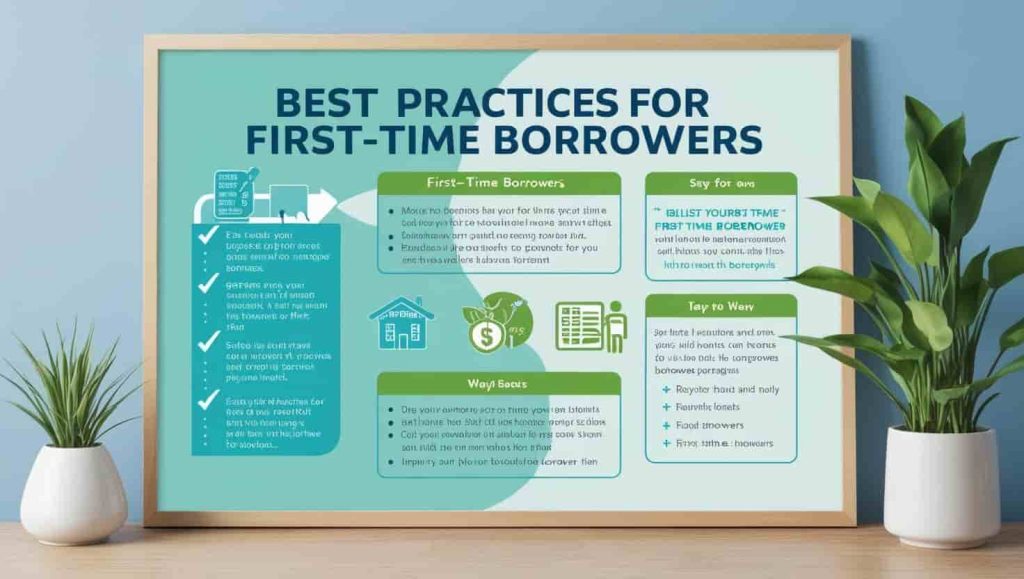
Microcredit Loan Management: Best Practices for First-Time Borrowers
Microcredit loans have become a transformative tool in empowering first-time entrepreneurs and small business owners, particularly in underserved communities where traditional financing options are limited. At Valdymas Entrepreneurial and Transformational Leadership Empowerment Program (VETLEP), providing access to affordable, flexible microcredit loans is at the core of our mission to promote economic development and poverty reduction. However, managing a microcredit loan effectively requires careful planning, financial discipline, and proactive decision-making. This essay explores best practices for first-time microcredit borrowers, including setting realistic goals, understanding loan terms, budgeting, maintaining consistent repayment, and seeking mentorship, to ensure a successful loan experience that fosters long-term growth.
Setting Realistic Financial Goals
Setting clear and achievable financial goals is essential for effective loan management. By defining specific objectives, borrowers can create a targeted plan for how the loan will be utilized to benefit their business. According to Brigham and Ehrhardt (2020), setting realistic financial goals helps borrowers focus on priority areas that directly support business growth, such as purchasing inventory, expanding production, or upgrading equipment. For instance, an entrepreneur aiming to increase sales by 20% within the first year of taking a loan can channel funds into targeted marketing efforts or enhanced production capacity. At VETLEP, we emphasize the importance of goal-setting in our training programs, encouraging entrepreneurs to align their loan use with their long-term business objectives to maximize the impact of their borrowed capital.
Understanding Loan Terms and Conditions
Before taking on a microcredit loan, it is crucial for borrowers to thoroughly understand the loan terms, including interest rates, repayment schedules, and potential penalties. Many first-time borrowers may overlook specific conditions that could lead to financial strain later, such as high-interest rates or inflexible repayment terms (Gitman & Zutter, 2018). Microcredit loans from VETLEP are designed with low interest rates and transparent terms, which helps reduce financial burdens on small business owners. Nonetheless, understanding these terms fully enables borrowers to make informed decisions and avoid unexpected costs. Tracy (2022) suggests that borrowers should always clarify any aspects of the loan agreement they find confusing, as this can prevent misunderstandings and ensure a smooth repayment process.
Developing a Budget to Optimize Loan Use
Creating a budget is one of the most effective ways for borrowers to manage their loan responsibly. A well-structured budget allows borrowers to allocate their funds efficiently, ensuring that they cover both essential business needs and anticipated loan repayments. Barrow and Barrow (2019) note that budgeting is essential in controlling expenses, managing cash flow, and making informed spending decisions that support business growth. In practice, first-time borrowers should prioritize expenses that have a direct impact on profitability, such as production costs, marketing, and employee training. By closely monitoring their budget, borrowers can prevent unnecessary expenses and maintain a strong financial position that supports timely loan repayment. VETLEP’s financial training programs emphasize budgeting techniques to equip borrowers with the skills necessary for effective loan management.
Consistent Repayment and Building Creditworthiness
For first-time microcredit borrowers, consistent and timely repayment is essential for building creditworthiness, which can facilitate future access to loans and other financial opportunities. Regular repayments not only prevent penalties and late fees but also demonstrate financial responsibility and reliability to lenders. According to Peavler (2021), timely loan repayment is a fundamental aspect of financial discipline that enables borrowers to strengthen their business’s financial reputation and establish a positive credit history. Furthermore, consistent repayment reflects positively on the borrower’s commitment to financial management, which can be valuable for building trust with other investors and financial institutions. At VETLEP, we provide borrowers with flexible repayment options to accommodate varying income streams and support timely repayment, helping borrowers manage their loans without compromising operational stability.
Seeking Mentorship and Financial Guidance
For first-time borrowers, seeking mentorship and financial guidance is a powerful resource that can provide valuable insights into loan management and business growth strategies. Mentors can assist borrowers in navigating complex financial decisions, from budgeting and cash flow management to investment planning and market analysis (Clarke, 2018). VETLEP’s mentorship programs connect borrowers with experienced professionals who offer guidance on maximizing the benefits of their loan, making informed financial decisions, and avoiding common pitfalls that can lead to financial strain. Research shows that mentorship significantly enhances the success rate of small businesses, with borrowers who receive guidance more likely to manage their finances effectively and achieve long-term business growth (Bangs, 2021).
Planning for Unexpected Challenges
In business, unexpected challenges are inevitable, and first-time borrowers must be prepared for unforeseen expenses or shifts in market conditions. Financially resilient borrowers often establish an emergency fund or contingency plan to cover unexpected costs without jeopardizing their loan repayment schedule (Jones & George, 2021). For instance, setting aside a small portion of the loan or business revenue as an emergency fund can act as a buffer in times of financial strain, such as seasonal dips in sales or sudden operational costs. At VETLEP, we stress the importance of resilience planning, as it ensures that borrowers can continue meeting their loan obligations while adapting to changing circumstances.
Effective microcredit loan management for first-time borrowers involves a combination of strategic planning, financial discipline, and proactive support. By setting realistic goals, understanding loan terms, creating a budget, maintaining consistent repayment, and seeking mentorship, borrowers can optimize their loan use and set the foundation for sustainable growth. VETLEP’s commitment to empowering entrepreneurs with access to capital, training, and mentorship underscores the importance of responsible loan management, which is essential for economic empowerment and poverty reduction in underserved communities. Through these best practices, first-time borrowers can not only achieve business success but also build creditworthiness and financial resilience, fostering a cycle of growth and opportunity.
References
- Bangs, D. H. (2021). A Complete Guide to Financial Management for Small Business: Techniques and Tools for Managing Financial Resources. Entrepreneur Press.
- Barrow, C., & Barrow, P. (2019). The Business Plan Workbook: A Practical Guide to New Venture Creation and Development. Kogan Page.
- Brigham, E. F., & Ehrhardt, M. C. (2020). Financial Management: Theory & Practice. Cengage Learning.
- Clarke, M. (2018). Entrepreneurial Finance and Accounting for High-Tech Companies. Cambridge University Press.
- Gitman, L. J., & Zutter, C. J. (2018). Principles of Managerial Finance. Pearson.
- Jones, G. R., & George, J. M. (2021). Essentials of Contemporary Management. McGraw-Hill Education.
- Peavler, R. (2021). Business Budgeting for Small Enterprises: Practical Strategies and Solutions. Routledge.
- Tracy, J. A. (2022). Accounting for Dummies. Wiley.
- Zimmerman, J. L. (2017). Accounting for Decision Making and Control. McGraw-Hill Education.



